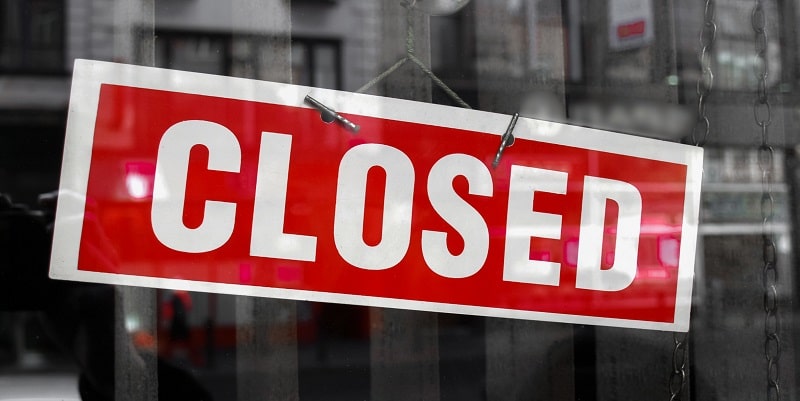Just over a decade ago, Clayton Christensen and I predicted that serious challenges were coming to higher education. Thanks to a confluence of factors—unsustainable business models and cost structures; demographics; and new, low-cost college options or alternatives powered in part by online learning—roughly 25% of colleges would close or merge in the couple of decades ahead.
Since then, many have suggested that we were wrong because there hasn’t been a cataclysmic cliff yet. Never mind that the real demographic “cliff” with fewer 18-year-olds—particularly in the Northeast and Midwest—doesn’t begin until 2026. And never mind that there may never be a rapid “cliff” of closures but instead a steady stream of shutdowns for many years.
For some, their evidence is that the top 200 schools seem largely intact. Never mind again that we have been clear that the top schools are unlikely to be affected by the trends we documented.
Still, given the confusion, it’s worth being clearer. Not only will the top selective undergraduate programs likely be OK, but they almost certainly won’t be “disrupted” at all. Commoditized and reduced to less influence in the country? Perhaps. But not disrupted—as the word is understood when we’re talking about the Theory of Disruptive Innovation that Christensen coined.
Understanding a few aspects of Disruptive Innovation Theory will help illustrate why.
Disruptions don’t take existing, desirable customers at first
That’s because disruptions start by serving nonconsumers—people who aren’t using the existing products and services in an industry. Disruptive innovations initially expand the pie, in other words. They don’t steal market share. That’s one reason why the presidents of disruptive innovations like Western Governors University (WGU) and Southern New Hampshire University (SNHU) don’t feel like they are really competing with each other at this point. When you realize that there are 40 million adults with some college and no degree, for example, you realize just how much more pie there could be! The nearly half a million learners that these two institutions serve—while a lot—are still a drop in the potential bucket.
Indeed, some of the players expanding the pie aren’t even accredited colleges and universities. They might be players like YouTube, LinkedIn Learning, Udemy, Coursera, Pluralsight, ChatGPT, and more—the places where adults go to learn just about anything online when they get stuck or have a problem to solve.
Even when disruptors start to steal market share later, they serve people who are overserved by the existing offerings in a market. These overserved individuals are often the ones causing institutions to offer lower-margin goods or services that are often hurting their bottom line. Allowing the leading organizations to hand those individuals off to the upstart disruptors often improves their bottom line. It’s mutually beneficial, in other words.
Disruptive innovation is a slow process
Next, disruptive innovation is less an event than a process. And it’s a long process. “Slowly, slowly, then all at once” is an oft-used phrase to describe it. One of Christensen’s favorite case studies was the disruption of the steel mill industry. That process took 30 years! In a regulated and heavily subsidized market like higher education, it would be shocking if it were quicker than that.
Disruptive innovation requires a collapse in volume
Finally, the ending act of disruptive innovation is the collapse of volume for the old players, as people flock out to the disruptor that has steadily improved to become “good enough” in a way that’s more accessible and lower cost. With a loss of volume, their business models collapse.
And here’s the rub. Exclusive colleges and universities, particularly in the US, thrive because they reject volume. In that, they’re quite similar to the luxury watchmakers that have survived disruption by digital technologies. Their very value propositions are tied up in the fact that they are selective and small. For some of their programs, they actually lose money on each student whom they educate. Losing volume isn’t a huge worry so long as they have qualified applicants to admit (this latter point is the fear of less selective but high-priced colleges).
Now, some might point out that losing application volume might take the shine off Harvard and Yale. Its tens of thousands of applicants that allow it to have admit rates below 5% create its value. There’s some truth to that. Indeed, it’s quite likely that as new entrants emerge targeting top students—entrants like Minerva University (where I’m a trustee) and the University of Austin—we’ll see these top universities commoditize some. Or at least lose some of their stranglehold over the popular imagination, much as the luxury watchmakers have.
But they’ll still be around. And the social networks that they create will likely still be valuable. After all, was Yale considered bad in 2000 when it accepted 18.3% of its 12,887 applicants? And will a collapse in applications cripple their business models? Perhaps it’ll hurt their reputations, but it would hardly be existential.
One could still go deeper on this strand.
But the bottom line appears clear. With a lot of slack, there’s really no volume in the top rejective institutions of American higher education to lose because their value propositions aren’t tied up in volume. They’re tied up in anti-volume. And that’s not something you can “disrupt.”



